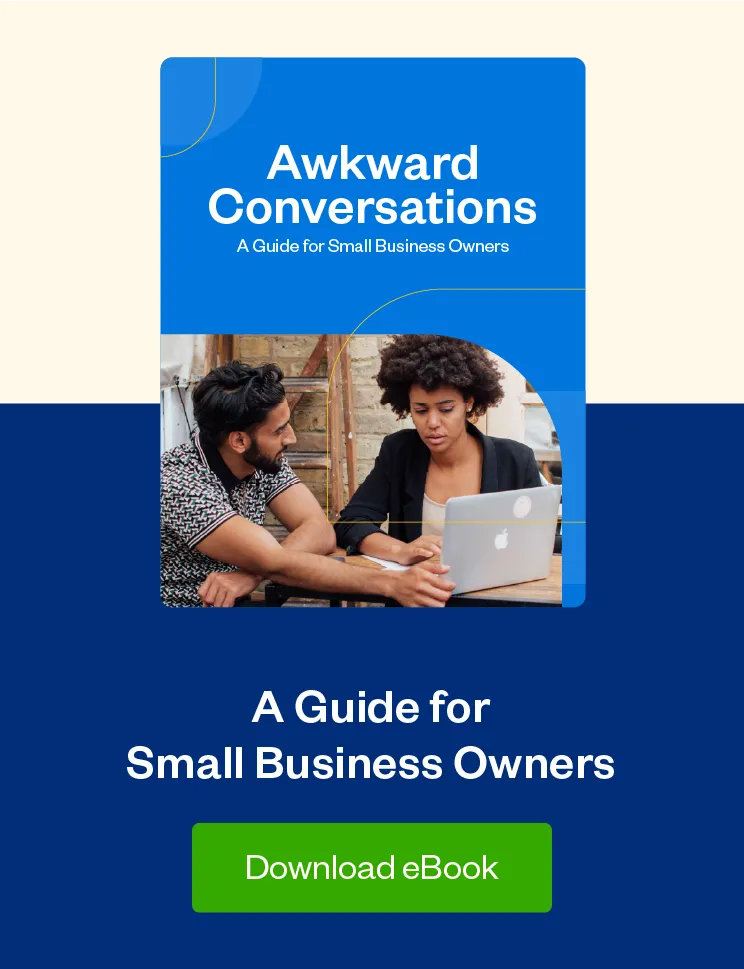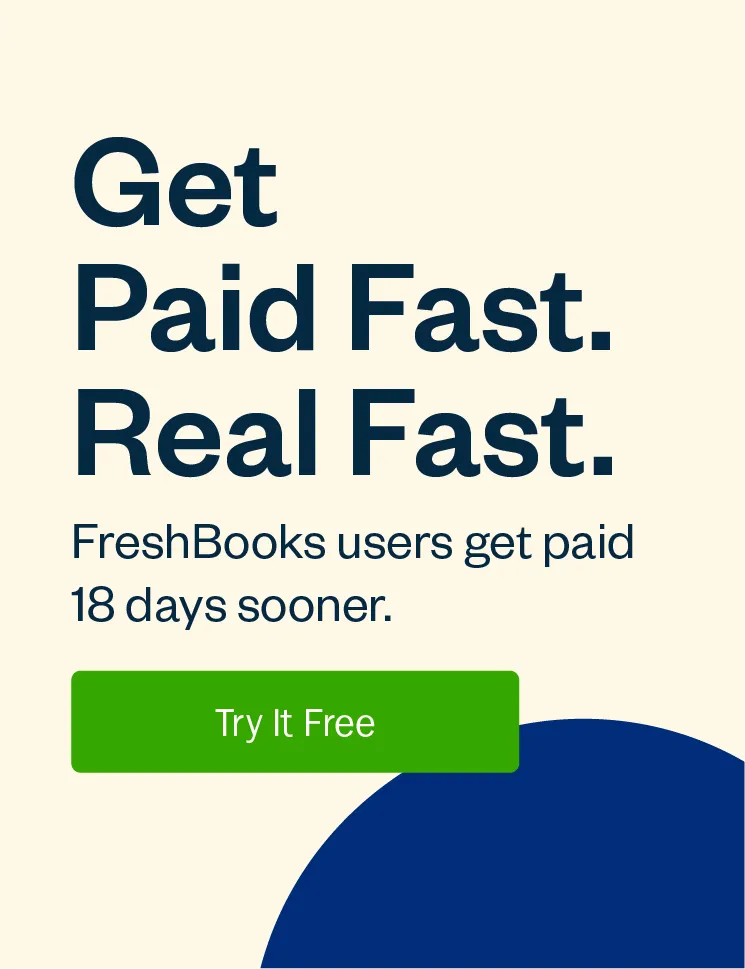Does money talk make you cringe? Don't fret—there are simple ways to help you turn those awkward conversations into easy (and automatic) exchanges.

When I started my writing business, I avoided money conversations like the plague. Clients would ask me what my rates were and I’d change the subject by asking a question: “What’s your budget?”
I told myself this was the right decision because it allowed me to gauge whether they were worth working for based on what they were willing to pay me. The truth was that I felt uncomfortable telling clients what my rates were in fear that they would balk at them.
I hated money talk and talking about wealth and financial things for years.
Similarly, I feared chasing clients for late payments. I imagined that they’d think I was only interested in money and drop me like a hot potato. I was fearful of money talk because I thought it would lead to a strained relationship with each person, and ultimately, a lost client.
Table of Contents
Overcome Imposter Syndrome and Get Comfortable With Money Talk
As my business grew, I grew. I realized money talk was unavoidable. I also quickly learned that if I wanted to be financially fit and have a thriving business, I would have to learn to deal with it.
And deal with it I did. The more financial conversations I had, the easier they became. When clients asked me my rates, I told them. When payments were overdue, I reminded them.
In hindsight, I see why I was so uncomfortable having these conversations. And no, it wasn’t only the fear of losing clients… It was much deeper than that. I disliked conflict, felt like an imposter, and didn’t understand my worth. Who was I to be charging clients? What value was I actually providing?
These questions consumed me. Doubts festered because of this story I kept telling myself, and it affected my ability to make money. But you know what? Over time I developed a sense of self-worth and became more comfortable with these conversations.
Money Talk Is a Key Part of Your Small Business
I eventually became so confident that I put a stake in the ground: “These are the services I offer and these are my prices. If you don’t like it, that’s okay; I’ll simply find someone who does.”
That’s not to say that I’m entirely comfortable talking about money today; I’m not. But my improved self-worth, recognition of the value I provide, and acceptance that these conversations are part of running a business have helped me build a thriving one.
And I want the same for you. I acknowledge that these conversations are more difficult for some. So difficult that a would-be founder may struggle to assert their work, or might not even bother with starting their business in the first place.
Perhaps this sounds familiar to you.
I get it, I do. You’ll do anything to avoid these conversations. I’d like to say that you can build a business without having them. But you can’t—these discussions are unavoidable. The good news is that investing in the right tools will make your next money talk that much more manageable.
How the Right Finance Tools Make Awkward Money Conversations Manageable
Just as social media made it easy to create new connections, the right tools have made those painful “money talk” conversations a little less painful by putting much of the process on autopilot. Here’s how these tools and tips can help you become more financially fit.
1. Automate Late Payment Reminders
You’ve sent an invoice to a client and the payment is now late. Sound familiar?
Traditionally you’d have the cringe-worthy task of creating and sending an email to remind the client the invoice is overdue. You’d likely sit there and wonder: How do I word this email about being paid for my hard work without sounding pushy?
You’d probably also worry about how the client will respond and how you’re going to deal with it. This entire process can cause a lot of anxiety. I’ve experienced this time and time again in my writing career and, to be honest, I still experience this today. I don’t think the ickiness around money talk will ever fully go away.
Thankfully, many invoicing tools (like FreshBooks!) let you set automatic late payment reminders as soon as you send the first invoice. That reminder is sent when the invoice becomes overdue and you don’t even have to lift a finger. More importantly, you avoid all that unnecessary anxiety while waiting for your customers to submit payment.
2. Quickly Set Late Payment Fees on Your Invoices
I do not have a late payment fee policy, but I know of many fellow freelancers who do. They typically set a monthly finance charge based on the value of the invoice.
These fees may encourage clients to pay you on time or risk facing penalties and may prevent the need for sending late payment reminders altogether. And of course help you avoid “money talk.”
Of course, charging late payment fees may not always be the best idea and that’s why it’s important to follow some guidelines:
- Make sure the client is aware of the charge at the beginning of a relationship. If they aren’t, you’ll only open yourself up to even more uncomfortable money conversations.
- Know when not to enforce the policy and be empathetic. A regular client may be going through a personal challenge, such as the death of a loved one.
- Ask yourself if they were happy with the services you provided. Some clients don’t speak up when they’re dissatisfied. You should establish how happy they are with your work at the end of the project before you enforce those fees. After all, it’s highly unlikely they’ll want to pay if they feel you haven’t delivered.
3. Easily Create Killer Project Estimates
How often have you had money talk with a client who thinks you’ve gone overboard on surprise charges due to their scope creep or ballooning input?
While you may feel that those extra fees are warranted, your client may not. This usually happens because they weren’t discussed at the beginning of the project, or at the point when the scope of the project changed.
You can avoid these scenarios by creating clear project estimates. Straightforward estimates help you manage client expectations and prevent disagreements about price. They detail information like the scope of work, cost, exclusions, the length of the project, and more. And best of all they get money talk out of the way early, so you’re both on the same page.
Consider using intuitive tools that let you create estimates in a matter of minutes with one-click templates and many built-in features.
Once you’ve sent the document over to your clients, don’t just assume they’ll read it. Follow up with a phone call—or if you can’t—an email to make sure they can access it and that they’re on the same page as you. Or, use online tools like FreshBooks that let you collaborate and discuss your terms with built-in discussion features.
When you submit estimates before starting work, it’s far less likely that you’ll have disagreements about price. And in the rare case that you do, feel comfortable with that conversation knowing that you can justify what they may regard as “surprise” extra charges by referencing your estimate.
4. Build Upfront Deposits Into Your Invoices
As a rule, I charge a 50% upfront deposit with any new client. Of course, I am flexible and do sometimes waive this deposit if they’re a reputable company that pays staff and contractors fairly regularly. (A quick Google search can help find this information.) I also discard that deposit over time as I learn to trust that the client will pay me on time.
Of course, this is how I choose to approach deposits and I understand you may take a different view altogether. Maybe you’re more comfortable with charging a lower deposit or providing your clients with different options—it’s all up to you.
Regardless, I like deposits because they reduce the chance of non-payment and an awkward money talk conversation later. If the client is happy to pay that 50% upfront, they’ll be more likely to pay the balance. For me, this means there’s no stress and discomfort in having to chase them for payment.
It also ensures that I have a steady stream of cash flowing in and that I don’t have to wait until the end of the project to get paid. This is especially important for longer projects, as I prefer not to go into debt while finishing up work with a client.
Plus, clients are typically more likely to be vested in the project if they have to fork out upfront cash. For projects that require considerable client input, this is an absolute godsend.
To ensure that clients are aware of these deposits, I use invoicing software that lets me specify the deposit amount and allows them to pay me directly from the invoice. This avoids the back-and-forth emails of telling clients how they should pay me the deposit.
5. Send Recurring Invoices
Do you offer maintenance plans for products? Do you bill for a fixed number of working hours on a regular basis? Do you provide monthly service packages? Then you’re the ideal candidate for recurring invoices.
Recurring invoices are invoices that you send out on a regular schedule to ensure that clients pay you on time. They work because they encourage clients to fall into a regular payment routine for the lifetime of the project.
Think of it like this: Do you question your phone, rent, and cable debit order that goes off each month? No, you don’t because you’re aware that it’s a regular bill you have to pay.
With the right invoicing tools, sending recurring invoices is a breeze. You can set when and at what intervals the invoices are sent out, and you’ll never need to worry about creating a new invoice for the work each time.
By sending recurring invoices and cultivating these good habits, you’ll spend less time chasing payments and avoid many uncomfortable (and unnecessary) money discussions.
End the Awkward Money Talk and Grow Your Wealth With the Right Finance Tools
Money talk isn’t easy, I get it. It’s something I struggled with and continue to work on in my own business. I’d love to tell you that you can build a thriving business by avoiding these conversations, but it would be doing you a disservice because these discussions are unavoidable.
Luckily, they can be more manageable. When you buy the right tools, they’ll help you:
- Automate late payment reminders and remove the anxiety of having to chase payment
- Set late payment fees to avoid reminders altogether
- Create simple project estimates quickly so that clients don’t receive surprise costs
- Charge upfront deposits and make it easy to pay from an invoice
- Send recurring invoices so you can cultivate good payment habits
With business accounting software from FreshBooks, small service-based businesses like yours can do all of the above and more.
Not only does it make money conversations more manageable by putting these processes on autopilot, but it also makes billing painless. With more of your time freed up, you’ll get to do more of what you love and spend less time on accounting. Sign up for a free 30-day trial and conquer those awkward money conversations today.
This post was updated in December 2022.

Written by Nick Darlington, Freelance Contributor
Posted on January 4, 2021

 Should You Ask for an Upfront Deposit on Work?
Should You Ask for an Upfront Deposit on Work? Recurring Invoices: What Are the Benefits and Should You Use Them?
Recurring Invoices: What Are the Benefits and Should You Use Them? Should You Charge Late Payment Fees on Invoices?
Should You Charge Late Payment Fees on Invoices?





